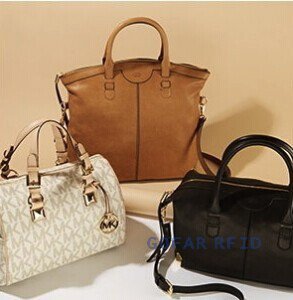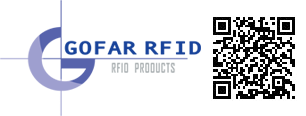Momentum is building for RFID in retail. During a panel session at the NRF Big Show on Tuesday, executives from Macy’s, Hudson’s Bay and PVH Corp. all confirmed that the use of RFID is accelerating through the value chain.
Hudson’s Bay Co. plans to be fully RFID deployed at 90 Hudson’s Bay locations and all 50 Lord & Taylor stores by 2016. The company has asked all of its vendors to start shipping tagged product no later than this August. Eileen DiLeo, executive vice president of stores at Hudson’s Bay, says that all of its private label brands have been fully tagged since September.

Hudson's Bay will tag all of its inventory by the end of this year.
“We’ve rolled this out into every single store and every day we seem to come into new use cases,” says DiLeo.
DiLeo spoke on a panel that included Peter Longo, president of logistics and operations at Macy’s, and Ken Duane, CEO of Heritage Brands and North America Wholesale, PVH Corp. The event was sponsored by GS1 US and moderated by GS1 US CEO Bob Carpenter.
Duane confirmed that his company will start to tag all of the products it manufacturers by the end of this year. Currently, the manufacturer of the Calvin Klein, Van Heusen and Tommy Hilfinger brands has only tagged underwear, core intimates and less than half of its dress shirt categories.
“It won’t be cheap when you consider we sell several million shirts,” says Duane. “It adds up quickly. That’s why you need to look at it from end to end. Initially, I wondered how I would absorb the cost. But my margins improve, I’m selling stuff at full price, I have on-time delivery, I eliminate (out-of-stocks), I can better project my sales, and better service the customer.”
Longo says that Macy’s goals for 2015 include expanding RFID to additional product categories, expanding its “pick to the last unit efforts,” and increasing back-to-front capabilities, or using RFID to products into the store floor quicker.
“Working through the development of those three elements is our main priority,” says Longo, who refers to RFID as “the air supply for retailers.”
Longo says that expanding “pick to the last unit” capabilities is a huge opportunity for all retailers. Typically, retailers don’t expose the last item of an SKU to online sales because they don’t have enough confidence in their inventory to locate the item quickly.
“We did an analysis of how much inventory exists in each store when you have one unit left, which usually nobody knows where it is or how to find it,” says Longo. “About 15 to 20 percent of your inventory is accounted for by the last unit in the store. It’s a massive amount of budget, either marked down or not sold, and it is curable through RFID. The confidence to sell is enhanced by RFID. That’s why we are aggressively pursuing this concept of pick to the last unit because we know it’s there.”
“We really feel so strongly that RFID will be a huge productivity enhancer for us to pick faster,” says DiLeo. “In the live and exciting theater of a retail store, items get moved. They are in the fitting room or under a rack. For us to be able to find them with confidence and say to customer that we have what they want is crucial.”
